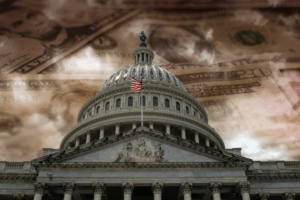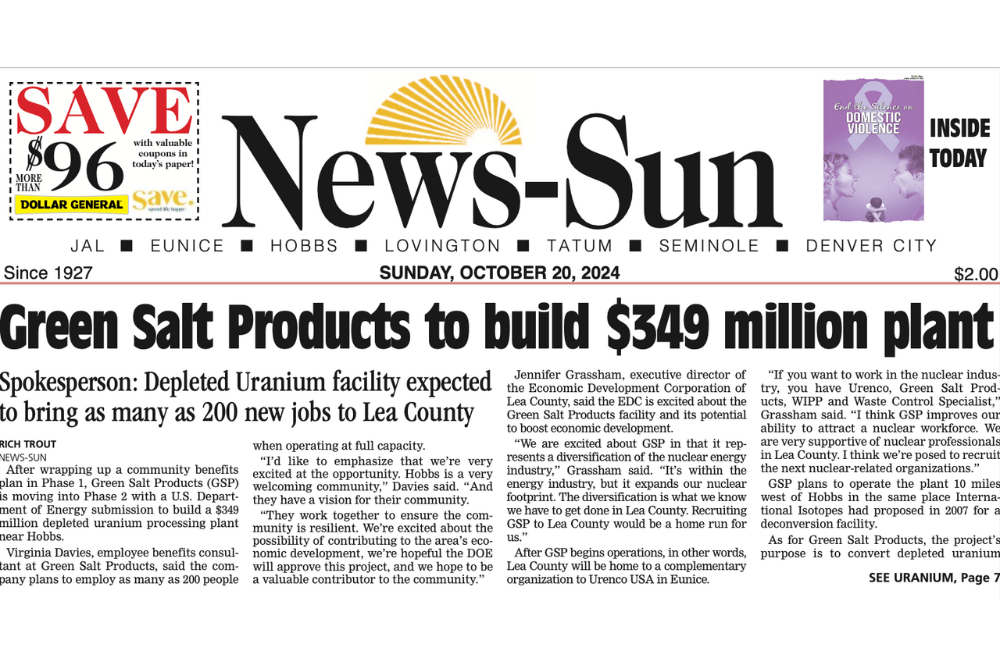Today, much of America’s nuclear fuel supply chain is controlled by foreign-owned enterprises. Whether state-owned giants like Urenco and Orano, or multinational corporations such as Cameco, the fact remains: the United States depends heavily on non-domestic players for a resource that underpins our energy security.
Recent executive orders and market demand—driven in part by the private sector’s rapid expansion into AI and data center energy needs—are changing the landscape. New American entrants are stepping into the nuclear fuel cycle, from uranium conversion and enrichment to the development of Small Modular Reactors (SMRs). This is progress. But for the U.S. to scale quickly enough to meet both energy demand and national security goals, it will require staggering amounts of capital.

In many cases, the path forward will include public–private financing partnerships, paired with thoughtful interventions to remove structural barriers. Among these:
- Energizing the Department of Energy (DOE) to act more decisively in advancing domestic projects.
- Revisiting restrictive provisions that prevent DOE-financed companies from bidding on certain government contracts.
- Ensuring small and medium-sized enterprises (SMEs)—the traditional engine of U.S. economic growth—have a real place in this market.
I’ll address those barriers in more detail in future articles. Here, I want to focus on how public capital should be structured to accelerate an American-owned nuclear fuel cycle.
Debt, Equity, or Something Different?
When the government participates financially, the form of that participation matters. Will public contributions come as debt, equity, or a hybrid?
Traditional debt financing offers repayment security for taxpayers but limits the upside participation in a high-growth sector. Straight equity, by contrast, allows the public to share in the long-term gains but exposes them to greater risk. Specialty equity structures—convertible instruments, preferred shares, warrants—can balance those trade-offs.
In my view, the financing model should aim for two objectives:
- Provide the scale of capital needed to bring new entrants to commercial readiness in the nuclear sector.
- Allow all Americans to benefit financially from the growth of domestic supply chains, not just a small group of well-capitalized founders and early investors.
When done correctly, this approach can address a growing public concern: that reshoring strategic supply chains may unintentionally accelerate the rise of an economic “oligarchy class” by concentrating profits in a few hands.
Reading the Broader Capital Environment
This discussion doesn’t exist in isolation—it sits within a much larger investment trend. CBRE’s Infrastructure Quarterly Q1 2025 notes that private infrastructure is attracting significant capital as investors seek both inflation protection and stable, long-duration returns. Digital infrastructure, in particular, is seeing accelerated interest thanks to AI’s enormous current and growing energy demands.
This environment matters for nuclear. It means private capital is willing to enter the space—but often looks for government participation to help de-risk early stages. Well-structured public financing can act as that catalyst, moving nuclear fuel projects from concept to commercial reality far faster than private capital alone.
Lessons from the “Arlington Doctrine”
We can also draw from the “Arlington Doctrine” described in First Breakfast’s recent Reshaping America’s Critical Materials Strategy. The doctrine flips the traditional supply chain model: instead of starting with raw materials, it begins with critical end products—such as defense systems or high-tech manufacturing—and works backward.
This downstream, demand-driven approach prioritizes reactivating dormant midstream capabilities—refineries, conversion plants, alloy facilities—before investing decades in new mining ventures. For nuclear fuel, that could mean channeling public funds into conversion or enrichment capacity already in place but underutilized, achieving resilience years ahead of a “mine-first” strategy.
The American Way—With Broader Benefits

In the U.S., new companies are expected to raise substantial private capital. That’s the American way, and it fosters innovation and accountability. But nuclear is different. The capital requirements are immense, the timelines are long, and the strategic stakes are high.
By structuring a portion of public financing as equity, we can preserve market discipline while also giving the public a stake in the upside. This model has been used before, with lessons to draw from.
Case Studies: Mountain Pass and Telesat
Consider Mountain Pass, the only rare earth mine in the United States. While primarily privately owned, it has benefited from public support and policy interventions that helped secure its role in critical mineral supply chains.
Or Telesat in Canada, a satellite communications company where government investment took a form that ensured broader national benefit while still allowing private capital to lead.
Both cases highlight the importance of aligning public investment with public benefit—and structuring deals so that citizens share in long-term value creation, not just short-term job growth.
Why This Matters
An American-owned nuclear fuel supply chain isn’t just about energy independence. It’s about ensuring:
- Security: Reducing reliance on foreign governments for critical fuel.
- Resilience: Supporting a diverse ecosystem of suppliers, including SMEs.
- Economic fairness: Making sure the reshoring of critical industries reduces, rather than deepens, wealth inequality.
Public–private financing is not a silver bullet. But if structured with foresight—and guided by lessons from other sectors—it can accelerate our path to a robust domestic nuclear fuel industry that serves both our national interest and the broader public good.
The opportunity is here. The challenge is to ensure the way we fund it reflects not only our strategic priorities, but also our values.




